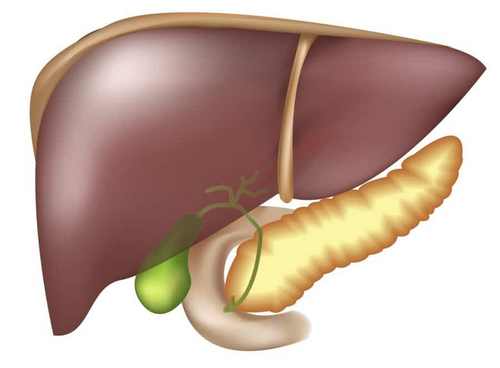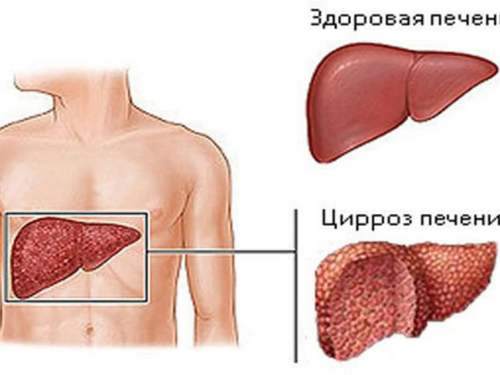Necrosis of the liver occurs when necrosis of the body. To affect this process can poor blood circulation, chemical or thermal exposure, or liver damage.
The concept of liver necrosis and necrobiosis included, i.e. degenerative changes in the body resulting in tissue death.
Necrosis is always a hard progressive pathological process that leads to negative consequences.
Symptoms of pathology
This condition usually develops acutely with sharp pain. However, in some cases, pain and other symptoms develop gradually.
Other symptoms of necrosis:
- The appearance of weakness in the body.
- Loss of appetite.
- Nausea and vomiting.
- Diarrhea.
- Skin becoming jaundiced.
- People rapidly lose weight.

The location of the pain – right upper quadrant and pancreas area. In some cases, the patient’s fever. The doctor can make a preliminary conclusion on the basis of fever, jaundice and hepatomegaly. At feeling liver pain is felt.
In severe disease, when the inflammation extends further develop the following characteristics:
- Enlargement of the spleen.
- Erythema on the palms.
- Hand tremor.
- Appear on the skin spider veins (occur due to hepatic encephalopathy).
- Mental disorders.
All the symptoms are strictly individual, in one patient they can manifest themselves acutely, the other to wear sluggish.
The pathogenesis of the disease
Necrosis its volume may be different, in medicine it is divided into the following components:
- Focal necrosis of the liver.
- Monocellulare, diffuse or focal.
- Zonal.
- Acinar.
- Massive or submassive.

The reasons for the development of liver necrosis following:
- The consequences of hepatitis, viral and toxic origin.
- Ischemia of the liver.
- Wilson’s Disease.
In addition to these diseases, necrosis of the organ can cause:
- Poisoning by chemicals, toxins, animal and plant poisons.
- Strong morning sickness during pregnancy.
- Extensive injury of the liver.
Diagnosis of liver necrosis
If there is a suspicion of liver necrosis, urgent advice of three specialists – a gastroenterologist, intensive care specialist and surgeon. The first thing to do is to hold an ultrasound of the liver and gallbladder. Currently, MRI is also done of the body and the biliary tract. For diagnosis effective emission computed tomography of the liver (liver SPECT). These diagnostic studies help to identify the lesion. Final data on the disease is determined by the liver biopsy.
To determine the degree of severity of the disease, appoint additional research: biochemical tests of the liver, the study of the level of nitrogenous wastes, ECG and EEG. If you suspect hepatitis tests to determine the level of antibodies.
Treatment of pathology
To limit the loss of hepatocytes (liver cells), you need to eliminate the cause.
Depending on the underlying disease, the following types of therapy:
- Antibiotics.
- Desensibilisation.
- Detoxification of the body.
- If there is obstruction of blood vessels, eliminate it.
- The therapy of the cardiovascular system.
- If possible, restores the integrity of the vessel.
- Eliminates compression of the spinal cord, nerve endings, etc.

Also, therapeutic measures included the restoration of the patient’s General condition, increase immunity, symptomatic treatment, aimed at stopping the inflammatory process.
The doctor may conduct a necrectomy, i.e. removal of dead tissue. In the treatment and after it the patient should stick to a special diet, which includes vitamins and amino acids.
The patient was prescribed a course of multi-vitamins, metabolites and enzymes. Alcoholic drinks strictly prohibited. Currently actively used is another way of treatment which can significantly prolong the life of the patient is an organ transplant.
The forecast is made based on many factors:
- The severity of the affected tissue.
- Causes.
- Intensity of encephalopathy.
- Infectious complications, etc.
Often doctors do unfavourable forecasts to patients under the age of 10 years and after the age of 40, provided a pronounced metabolic acidosis, if jaundice is present for a long time, and encephalopathy and elevated bilirubin.
Necrosis of liver cells can lead to a fatal outcome in gastrointestinal bleeding, sepsis, acute hepatic failure, with respiratory failure and severe blood loss. Prevention of disease is the early detection and immediate treatment to the doctor.




Don’t wear seat belts lest you drown in you own urine?
Black on black in the Charg I’m creepin’ Rub me the right way, you might get a genie B.o.B, black Houdini